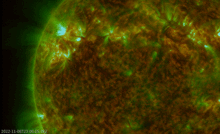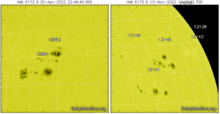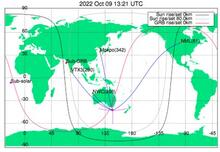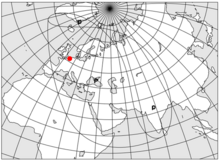news
Submitted on 2022-11-23
JSWSC has opened a new Topical Issue "Solar Sources of Space Weather".
Submitted on 2022-11-23
JSWSC has opened a new Topical Issue "CMEs, ICMEs, SEPs: Observational, Modelling, and Forecasting Advances".
Submitted on 2022-11-17
Solar Orbiter has spotted a ‘tube’ of cooler atmospheric gases snaking its way through the Sun’s magnetic field. The observation provides an intriguing new addition to the zoo of features revealed by the ESA-led Solar Orbiter mission, especially since the snake was a precursor to a much larger eruption.
Submitted on 2022-11-15
Two relatively large sunspot groups produced a number of M-class flares, the largest of which was an M5.2 early on 7 November.
Submitted on 2022-11-08
A small but important sector that is also affected by disturbed space weather is farming and agriculture.
Submitted on 2022-11-01
JSWSC has opened a new Topical Issue "Space Climate: Long-term effects of solar variability on the Earth's environment".
Submitted on 2022-10-27
The ESA-led Solar Orbiter mission has experienced its second close encounter with the Sun. It is delivering more stunning data, and at higher resolution than ever before!
Submitted on 2022-10-25
A strong gamma ray burst affected the Very Low Frequency (VLF) radio communications on 9 October.
Submitted on 2022-10-19
On 25 October, a partial solar eclipse will be visible from most of Europe, northeast Africa, the Middle East and the western portion of Asia. The eclipse can be followed live at the ROB/USET and PROBA2 websites, which provide also additional explanations.
Submitted on 2022-10-12
Solar Orbiter speeds towards its next rendezvous with the Sun on the evening of October 12.
Pages
Zircon - This is a contributing Drupal Theme
Design by
WeebPal.


































